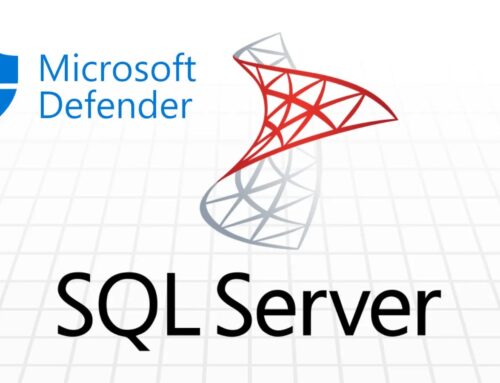
U.S. Sanctions Garantex and Grinex Over $100M in Ransomware-Linked Illicit Crypto Transactions
The digital frontier, while offering unprecedented opportunities, also serves as a battleground for illicit activities. A recent significant development underscores the persistent threat posed by financially motivated cybercriminals and the proactive measures taken by global authorities to curb their operations. The U.S. government has once again stepped up its efforts, renewing sanctions against a major Russian cryptocurrency exchange and introducing measures against its successor, citing their roles in facilitating massive ransomware-linked transactions. This action sends a clear message: the long arm of the law is extending deep into the anonymity of the crypto world to dismantle criminal networks.
OFAC’s Renewed Focus on Illicit Crypto Facilitators
On Thursday, the U.S. Department of the Treasury’s Office of Foreign Assets Control (OFAC) announced renewed sanctions against Garantex, a Russian-based cryptocurrency exchange. This isn’t Garantex’s first rodeo with OFAC; the initial sanctions targeted the exchange for its alleged involvement in money laundering activities tied to ransomware operators and other cybercriminal enterprises. The renewed sanctions stem from compelling evidence that Garantex has continued to play a significant role in the illicit finance ecosystem, processing over $100 million in transactions directly linked to illegal activities since 2019.
This substantial figure highlights the scale at which such platforms can operate, effectively serving as financial conduits for threat actors to cash out their ill-gotten gains. The consistent flow of illicit funds through Garantex underscores the challenge of combating financial crime in the decentralized space and the necessity for ongoing vigilance and enforcement by regulatory bodies.
Grinex: The Successor Under Scrutiny
In a critical expansion of its enforcement action, OFAC also announced sanctions against Grinex, identified as Garantex’s direct successor. This move demonstrates a sophisticated understanding by U.S. authorities of how illicit financial operations adapt and attempt to circumvent sanctions by rebranding or shifting operations to new entities. By sanctioning Grinex, OFAC aims to pre-emptively cut off a new avenue for cybercriminals, ensuring that the impact of the sanctions against Garantex is not readily mitigated through a simple corporate restructuring or name change.
Identifying and sanctioning successor entities is a crucial strategy in the fight against financial crime. It prevents a “whack-a-mole” scenario where sanctioned entities simply resurface under new guises, perpetuating their illegal activities. This proactive approach underscores the U.S. government’s commitment to disrupting the financial infrastructure that fuels ransomware attacks and other cybercrimes.
The Impact of Sanctions on Ransomware Operations
These sanctions are more than just punitive measures; they are strategic blows aimed at the financial lifeblood of ransomware groups. Ransomware relies on the ability to convert extorted cryptocurrency into usable fiat currency or other assets. Cryptocurrency exchanges like Garantex and Grinex, by facilitating these conversions, act as critical enablers for ransomware operations. Without access to such platforms, or with significantly restricted access, ransomware gangs face considerable challenges in profiting from their nefarious activities. This directly impacts their operational model and, ideally, their ability to launch future attacks.
By making it harder for cybercriminals to launder their money, OFAC’s actions reduce the return on investment for ransomware attacks, making them less appealing. This approach, targeting the financial incentives, is a cornerstone of effective cybersecurity defense strategies, complementing traditional technical defenses.
Remediation Actions for Organizations
While the primary target of these sanctions is the illicit financial infrastructure, organizations must also understand the broader implications and take proactive steps to enhance their security posture and compliance:
- Review and Update Sanctions Compliance Programs: Ensure your organization’s anti-money laundering (AML) and know-your-customer (KYC) policies are robust and regularly updated with OFAC’s Specially Designated Nationals (SDN) list. Proactively vet all cryptocurrency transactions and counterparties against this list.
- Strengthen Incident Response Plans: Develop and regularly test comprehensive incident response plans specifically tailored for ransomware attacks. This includes clearly defined roles, communication protocols, and recovery strategies.
- Enhance Network Security: Implement multi-layered security defenses, including strong firewalls, intrusion detection/prevention systems (IDS/IPS), and endpoint detection and response (EDR) solutions.
- Prioritize Patch Management: Regularly apply security patches to all operating systems, applications, and network devices. Many ransomware attacks exploit known vulnerabilities, some of which are documented in the CVE database (e.g., CVE-2023-34362 related to a MOVEit Transfer vulnerability leveraged by Cl0p ransomware).
- Employee Training and Awareness: Educate employees about phishing attempts, social engineering tactics, and the importance of strong password practices. A well-informed workforce is your first line of defense.
- Implement Robust Backup Strategies: Maintain segregated, immutable backups of critical data. This ensures business continuity even in the event of a successful ransomware attack.
Tools for Strengthening Security and Compliance
Leveraging appropriate tools is essential for effective cybersecurity and compliance. Here are some categories and examples that can aid organizations:
| Tool Category | Purpose | Examples / Considerations |
|---|---|---|
| Threat Intelligence Platforms | Provide up-to-date information on emerging threats, attacker tactics, and indicators of compromise (IoCs) related to ransomware and illicit finance. | Mandiant Threat Intelligence, CrowdStrike Intelligence, Anomali ThreatStream |
| Blockchain Analytics & Compliance | Trace cryptocurrency transactions, identify suspicious addresses, and ensure compliance with AML/CFT regulations. | Chainalysis, Elliptic, TRM Labs |
| Endpoint Detection & Response (EDR) | Monitor and respond to threats on endpoints, including detecting ransomware activity. | CrowdStrike Falcon, SentinelOne, Microsoft Defender for Endpoint |
| Vulnerability Management Scanners | Identify and prioritize vulnerabilities in IT infrastructure. | Tenable Nessus, Qualys, Rapid7 InsightVM |
| Security Information and Event Management (SIEM) | Aggregate and analyze security logs from various sources to detect security incidents. | Splunk, IBM QRadar, Microsoft Sentinel |
| Security Awareness Training Platforms | Educate employees on cybersecurity best practices and common attack vectors. | KnowBe4, Cofense, Proofpoint Security Awareness Training |
Conclusion
The U.S. Treasury’s renewed sanctions against Garantex and the new sanctions against Grinex mark a significant escalation in the ongoing global effort to disrupt the financial infrastructure underpinning ransomware and other cybercrimes. By targeting the cryptocurrency exchanges that facilitate illicit transactions, authorities are directly impacting the profitability and sustainability of these criminal enterprises. For organizations, this development serves as a stark reminder of the persistent and evolving threat landscape. Proactive measures, including robust cybersecurity defenses, comprehensive incident response plans, and rigorous compliance with sanctions, are not merely best practices—they are necessities in safeguarding digital assets and maintaining business continuity in an increasingly interconnected and perilous digital world.





